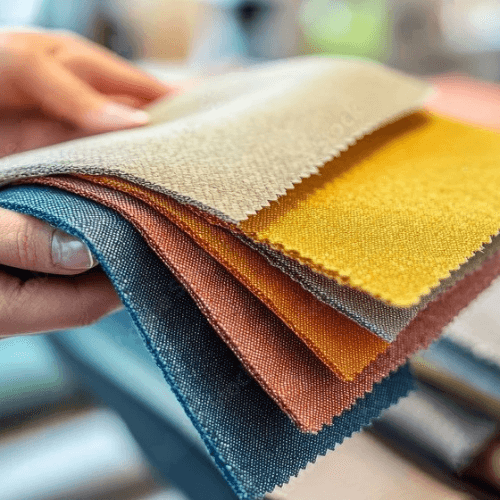Quality Control in Textile Exports: Best Practices for Success

Quality control is a critical aspect of textile exports, ensuring that products meet both domestic and international standards. As the global market becomes increasingly competitive, maintaining high-quality textiles is essential for building a reputable brand and achieving customer satisfaction. This blog outlines best practices for quality control in textile exports, providing actionable insights to help businesses succeed.
### 1. **Establish Clear Quality Standards
Setting clear quality standards is the foundation of effective quality control:
– **Define Specifications:** Create detailed specifications for each product, including material composition, colorfastness, strength, and performance characteristics. These specifications should align with industry standards and customer expectations.
– **Utilize Industry Standards:** Refer to established industry standards such as ISO (International Organization for Standardization) and ASTM (American Society for Testing and Materials) to ensure compliance with global benchmarks. Adhering to these standards helps maintain consistency and reliability.
### 2. **Conduct Thorough Raw Material Inspections
Quality control begins with the raw materials used in production:
– **Incoming Material Checks:** Inspect all incoming raw materials, including fibers, yarns, and fabrics, to ensure they meet specified quality standards. This includes testing for properties such as tensile strength, color consistency, and dimensional stability.
– **Supplier Collaboration:** Work closely with suppliers to communicate your quality requirements clearly. Establishing strong relationships can lead to better compliance with your standards and improved material quality.
### 3. **Implement In-Process Inspections
Monitoring production processes is essential for identifying issues early:
– **Regular Audits:** Conduct regular audits throughout the production process to ensure adherence to quality standards. This includes checking stitching quality, seam strength, and alignment during garment assembly.
– **Real-Time Monitoring:** Utilize technology to monitor production parameters such as temperature, humidity, and machine settings continuously. Real-time data can help identify deviations from established standards before they affect product quality.
### 4. **Establish a Quality Management System (QMS)
A robust Quality Management System provides a framework for maintaining high-quality standards:
– **Documented Procedures:** Develop documented procedures for all aspects of production, including inspections, testing protocols, and corrective actions. A well-defined QMS ensures consistency across processes.
– **Regular Reviews:** Conduct regular reviews of your QMS to assess its effectiveness and make necessary adjustments based on feedback and performance metrics.
### 5. **Perform Comprehensive Testing
Testing is crucial for verifying that textiles meet quality requirements:
– **Physical Testing:** Conduct physical tests to assess properties such as strength, durability, and colorfastness. These tests help ensure that fabrics can withstand wear and laundering without degrading.
– **Chemical Testing:** Perform chemical tests to evaluate material composition and safety compliance. This includes checking for harmful substances that may violate regulations or consumer safety standards.
### 6. **Implement Final Inspections
Final inspections are critical before products are shipped:
– **End-of-Line Checks:** Conduct thorough inspections of finished products to verify that they meet all specifications. This includes checking measurements, color consistency, design accuracy, and overall appearance.
– **Sampling Methods:** Use statistical sampling methods to evaluate a representative portion of each batch. This approach helps ensure that the entire shipment meets quality standards without inspecting every item individually.
### 7. **Document Findings and Take Corrective Actions
Maintaining comprehensive records is essential for continuous improvement:
– **Inspection Reports:** Document all inspection findings, including defects or non-compliance issues. These reports serve as valuable references for future improvements.
– **Corrective Actions:** Implement corrective actions promptly when issues are identified. This may involve reworking defective items or adjusting production processes to prevent recurrence.
### 8. **Engage in Continuous Improvement
Quality control is an ongoing process that requires commitment to continuous improvement:
– **Feedback Loop:** Collect feedback from customers regarding product quality and performance. Use this information to identify areas for improvement in your processes or products.
– **Training Programs:** Invest in training programs for employees to enhance their understanding of quality control practices and procedures. Well-trained staff are crucial for maintaining high-quality standards throughout production.
### Conclusion
Quality control in textile exports is vital for ensuring that products meet consumer expectations while complying with industry standards. By establishing clear quality standards, conducting thorough inspections at every stage of production, implementing a robust Quality Management System, performing comprehensive testing, documenting findings, and engaging in continuous improvement efforts, businesses can achieve success in the competitive textile market.
By prioritizing quality control practices, textile exporters can enhance their reputation, build customer loyalty, and ultimately drive business growth in an increasingly demanding global landscape. Embracing these best practices will not only lead to superior products but also position your company as a trusted leader in the textile industry.






